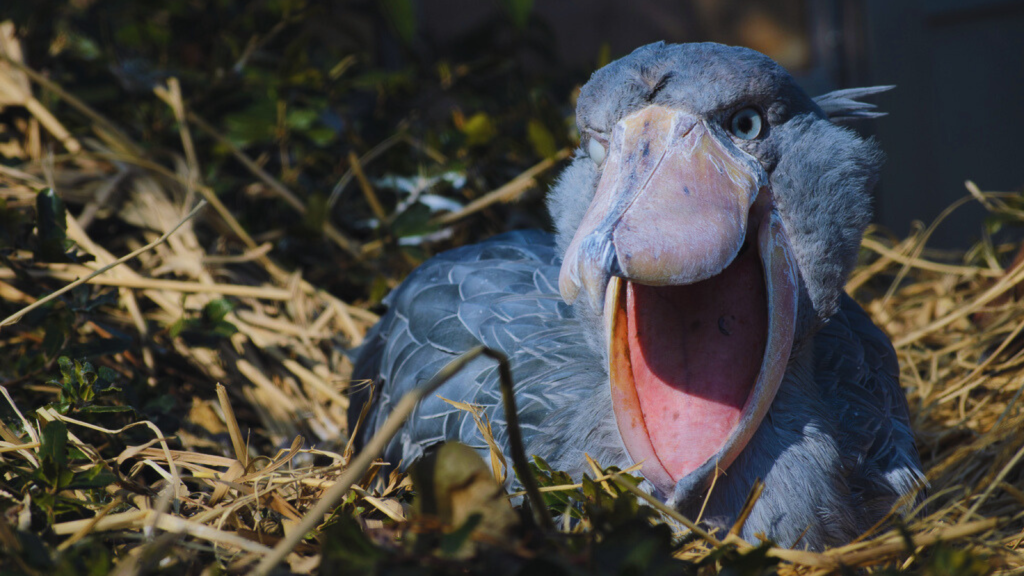Africa’s skies are home to some of the world’s most impressive avian giants. From the towering ostrich to the powerful martial eagle, these birds are awe-inspiring creatures. While we might be familiar with the pigeons and sparrows that frequent our British gardens, the scale and majesty of Africa’s largest birds are something else entirely. These feathered behemoths have adapted to a variety of habitats across the continent, from savannas to rainforests. Join us as we explore the 15 biggest birds that call Africa home, each with its own unique characteristics and fascinating behaviours.
Ostrich
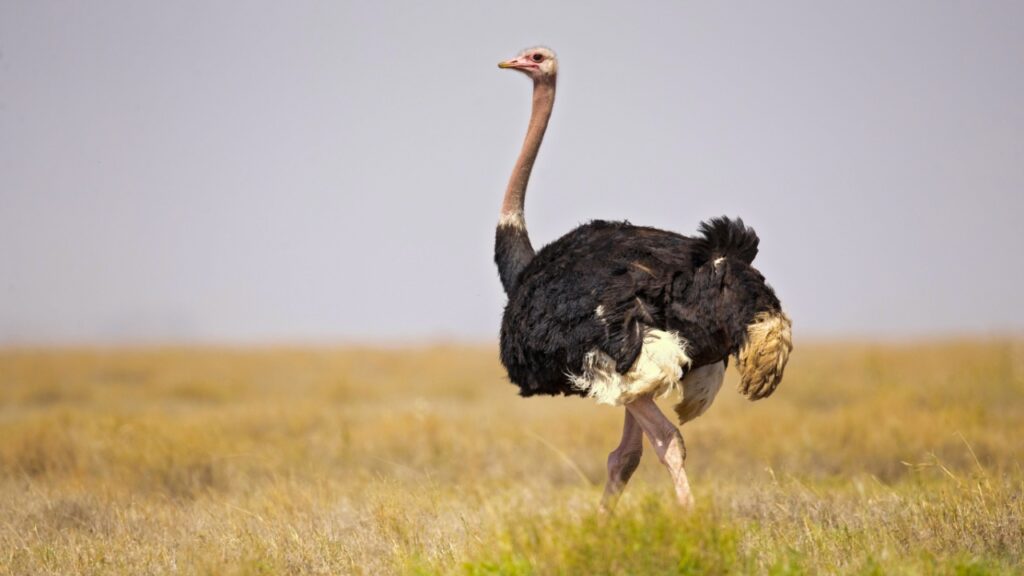
The ostrich is the undisputed heavyweight champion of the bird world. Standing up to 2.7 meters tall and weighing up to 156 kilograms, it’s not only the largest bird in Africa but also the largest bird on Earth. Despite its inability to fly, the ostrich can run at speeds of up to 70 kilometers per hour, making it the fastest bird on land. Its powerful legs can deliver a kick strong enough to kill a lion. Ostriches also have the largest eyes of any land animal, measuring 5 centimeters across, which helps them spot predators from great distances.
Kori Bustard

The Kori Bustard is the largest flying bird native to Africa. Males can weigh up to 18 kilograms and stand 1.5 meters tall. These impressive birds are found in eastern and southern Africa, where they strut across grasslands and savannas. Despite their size, Kori Bustards can fly, although they prefer to walk and only take to the air when necessary. They have a unique courtship display where males inflate their necks to several times their normal size to attract females.
Shoebill

With its massive shoe-shaped bill, the Shoebill is one of Africa’s most distinctive large birds. Standing 1.5 meters tall, this peculiar-looking bird is found in the swamps of central and east Africa. Its enormous bill is perfectly adapted for catching and crushing its prey, which includes fish, frogs, and even small crocodiles. The Shoebill is known for its patience, often standing motionless for hours while waiting for prey to come within striking distance.
Marabou Stork
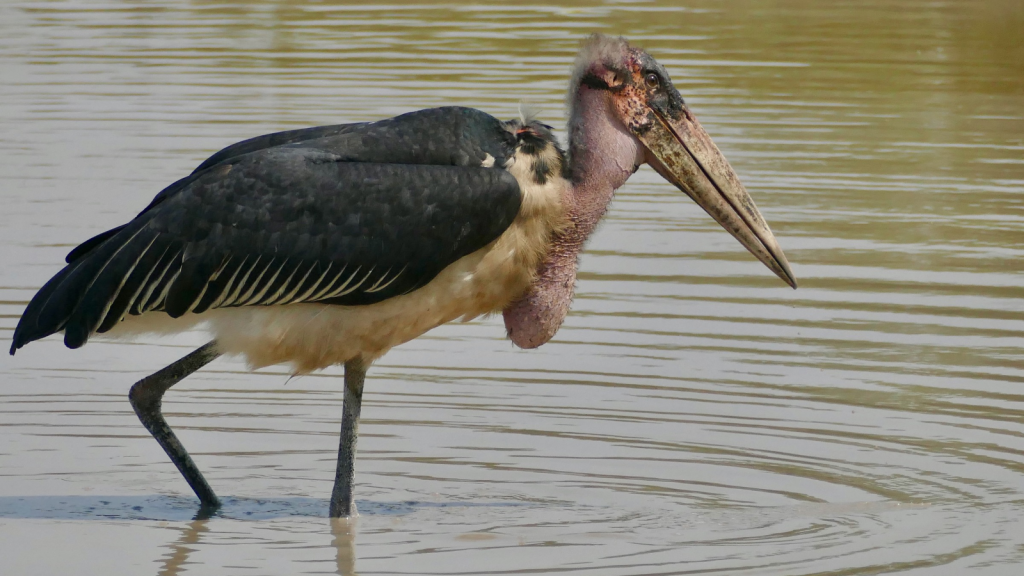
Often called the “undertaker bird” due to its appearance, the Marabou Stork can stand 1.5 meters tall with a wingspan of up to 3.7 meters. These scavenging birds are found across sub-Saharan Africa and are known for their bare heads and necks, which help them stay clean when feeding on carrion. Despite their somewhat unsavoury eating habits, Marabou Storks play a crucial role in their ecosystems by cleaning up dead animals. They have a large throat sac that they can inflate for courtship displays and to help regulate their body temperature.
Southern Ground Hornbill
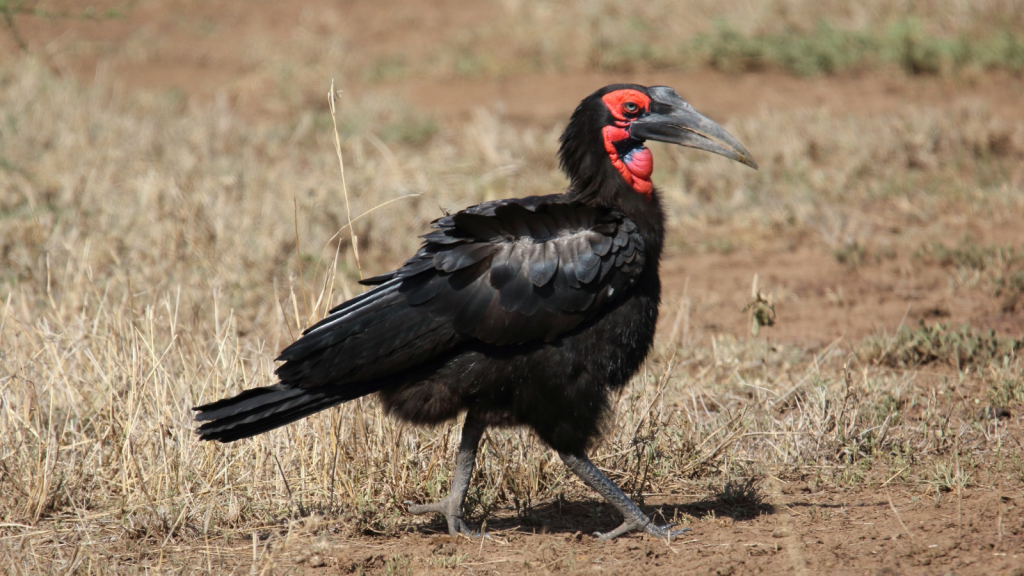
The Southern Ground Hornbill is the largest species of hornbill, standing up to 1.3 meters tall. Found in savannas and grasslands of southern and eastern Africa, these birds are known for their distinctive red facial skin and powerful beaks. They spend most of their time on the ground, hunting for small animals and insects. Southern Ground Hornbills are highly social birds, living in groups with a complex social structure that includes helpers who assist the breeding pair in raising chicks.
Secretarybird

With its long legs and distinctive crest of feathers, the Secretarybird looks like no other bird of prey. Standing up to 1.3 meters tall, these birds are found in the grasslands and savannas of sub-Saharan Africa. They’re known for their unique hunting method of stomping on prey with their powerful legs, which can deliver a force five times their body weight. Secretarybirds have excellent eyesight and can spot prey from great distances, making them efficient hunters in their open habitat.
Martial Eagle
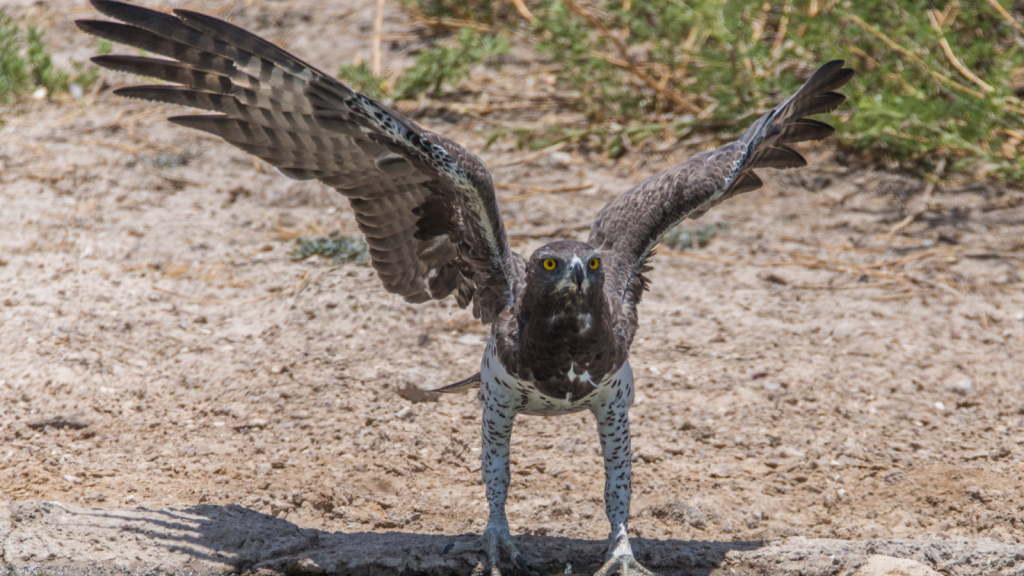
The Martial Eagle is Africa’s largest eagle, with a wingspan that can reach 2.6 meters. These powerful birds of prey are found across sub-Saharan Africa and are known for their strength and hunting prowess. They can take down prey as large as small antelopes and have been known to snatch up young goats and lambs, much to the dismay of local farmers. Martial Eagles build enormous nests, sometimes weighing up to 90 kilograms, which they may use for several years.
Lappet-Faced Vulture
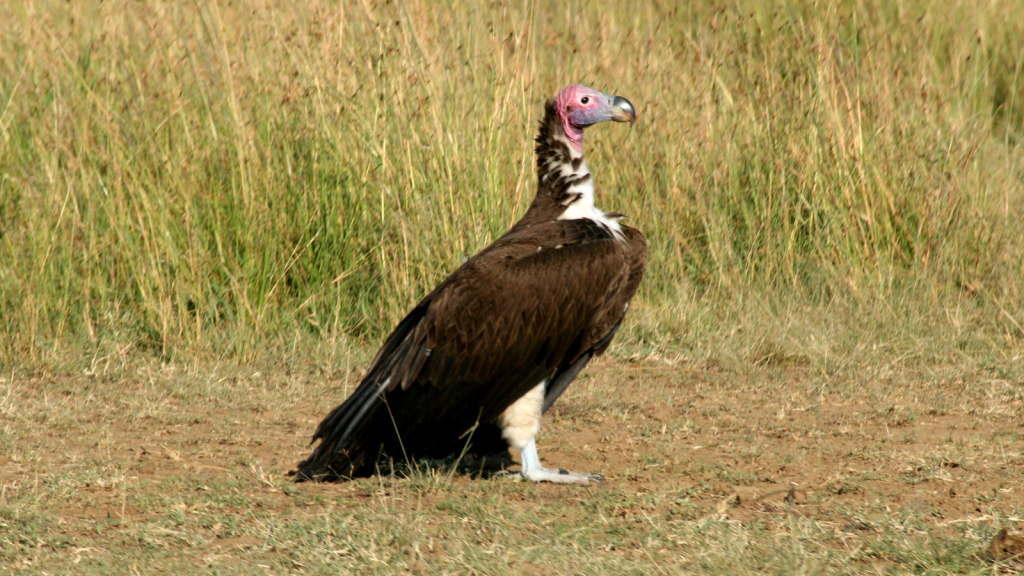
With a wingspan of up to 2.9 meters, the Lappet-Faced Vulture is one of Africa’s largest birds of prey. These imposing scavengers are found across much of Africa and are known for their bare, pinkish head and powerful beak. They’re often the first to arrive at a carcass and can tear through tough hides that smaller vultures can’t manage. Lappet-Faced Vultures have extremely strong stomach acid that allows them to digest rotting meat and kill any harmful bacteria they might ingest.
Saddle-Billed Stork
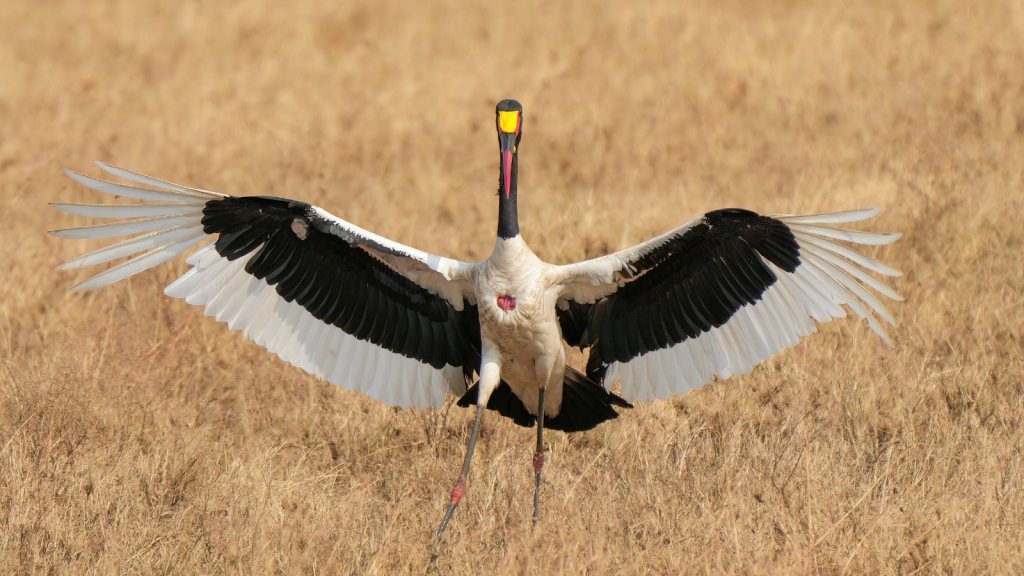
The Saddle-Billed Stork is one of Africa’s tallest birds, standing up to 1.5 meters tall. These striking birds are easily recognized by their black and white plumage and their large, colorful bills. They’re found near water bodies across sub-Saharan Africa, where they wade in shallow waters hunting for fish, frogs, and small reptiles. The Saddle-Billed Stork’s bill is so large and heavy that young birds can take up to three months to hold their heads up properly.
Wattled Crane

Standing up to 1.8 meters tall, the Wattled Crane is Africa’s largest crane species. These elegant birds are found in wetlands across eastern and southern Africa. They’re easily recognized by the distinctive fleshy wattles hanging from their throats, which give them their name. Sadly, Wattled Cranes are endangered due to habitat loss and hunting. They have a complex courtship dance that involves jumping, bowing, and calling, which helps strengthen the bond between mating pairs.
Goliath Heron
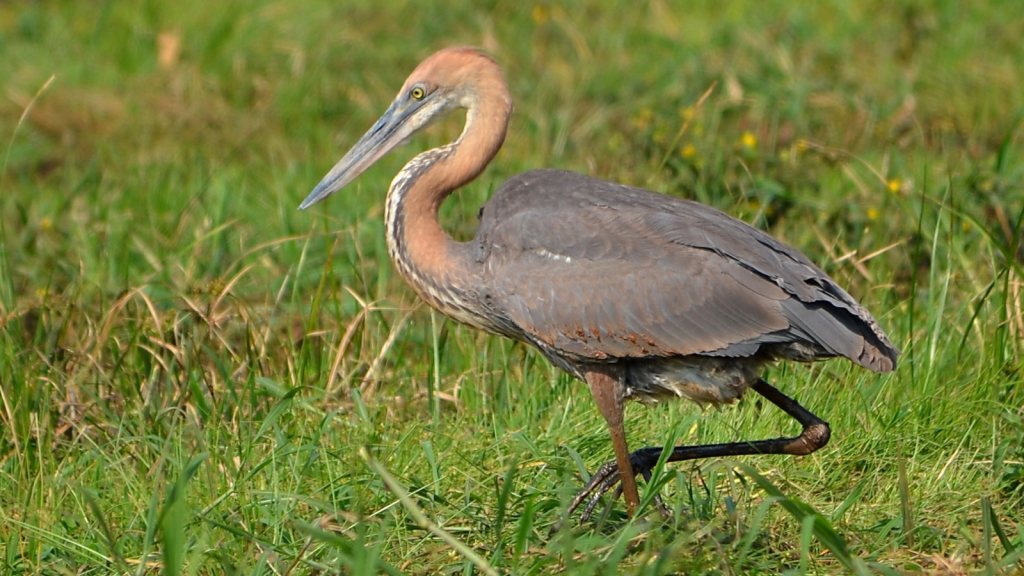
The Goliath Heron is the world’s largest heron, standing up to 1.5 meters tall with a wingspan that can reach 2.3 meters. These massive birds are found near water bodies across much of sub-Saharan Africa. Their long necks and powerful bills make them excellent fishers, capable of catching prey as large as small crocodiles. Goliath Herons are solitary birds and fiercely territorial, defending large feeding territories from other herons and even small crocodiles.
Cape Vulture
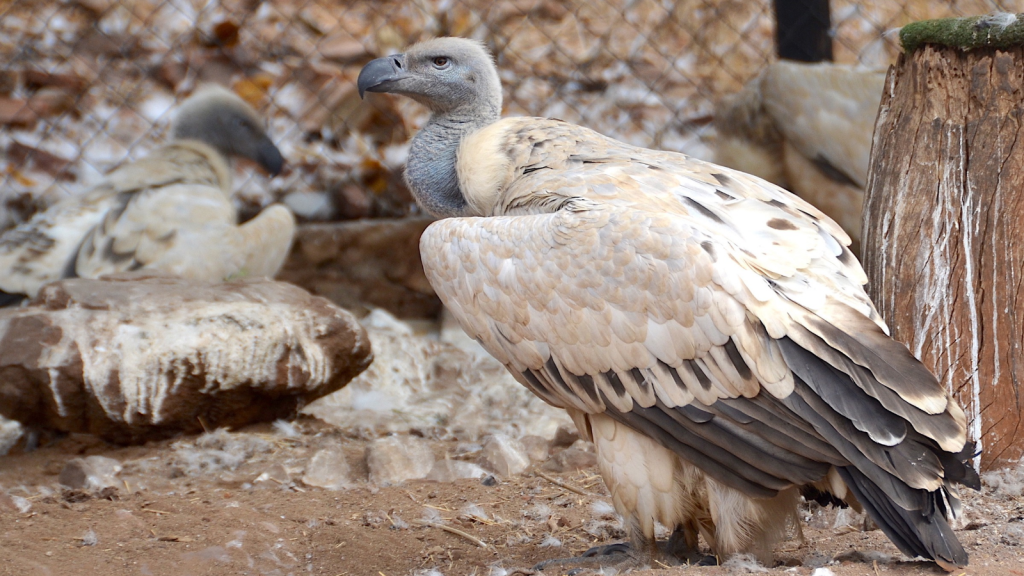
With a wingspan of up to 2.5 meters, the Cape Vulture is one of Africa’s largest vultures. These birds are found in southern Africa, where they nest on cliff faces and forage over vast areas of grassland and savanna. Like other vultures, they play a crucial role in their ecosystems by cleaning up carrion and helping prevent the spread of diseases. Cape Vultures have excellent eyesight and can spot a carcass from over 10 kilometers away, allowing them to quickly find food in their wide-ranging habitat.
Verreaux’s Eagle
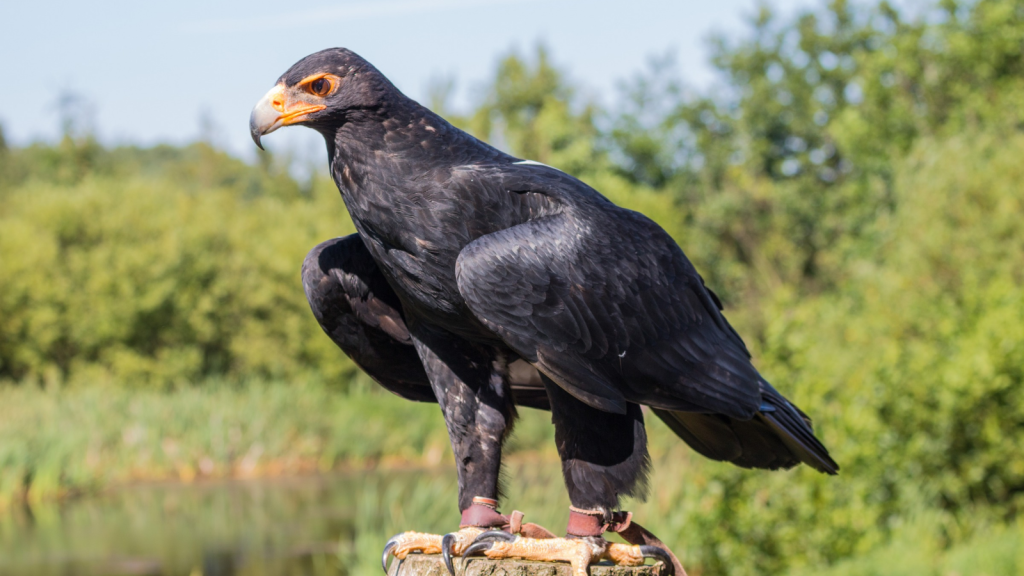
Also known as the Black Eagle, Verreaux’s Eagle is one of Africa’s largest eagles, with a wingspan of up to 2.3 meters. These powerful birds of prey are found in mountainous and rocky areas across much of sub-Saharan Africa. They’re known for their distinctive black plumage and white ‘V’ on their backs, as well as their preference for hunting rock hyraxes. Verreaux’s Eagles are monogamous and often mate for life, with pairs performing spectacular aerial displays together during courtship.
Pel’s Fishing Owl
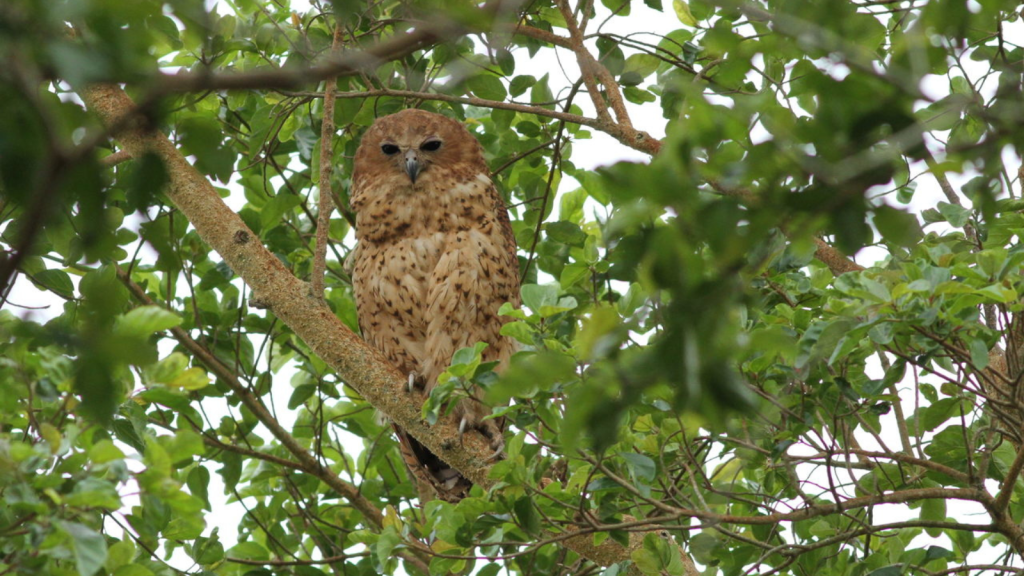
While not as tall as some of the other birds on this list, Pel’s Fishing Owl is one of Africa’s largest owls, with a wingspan that can reach 1.5 meters. These impressive nocturnal birds are found near water bodies in parts of central and southern Africa. As their name suggests, they’re specialist fish hunters, using their powerful talons to snatch fish from the water’s surface. Pel’s Fishing Owls have specialized serrations on their toes that help them grip slippery fish, making them incredibly efficient aquatic predators.
Crowned Eagle
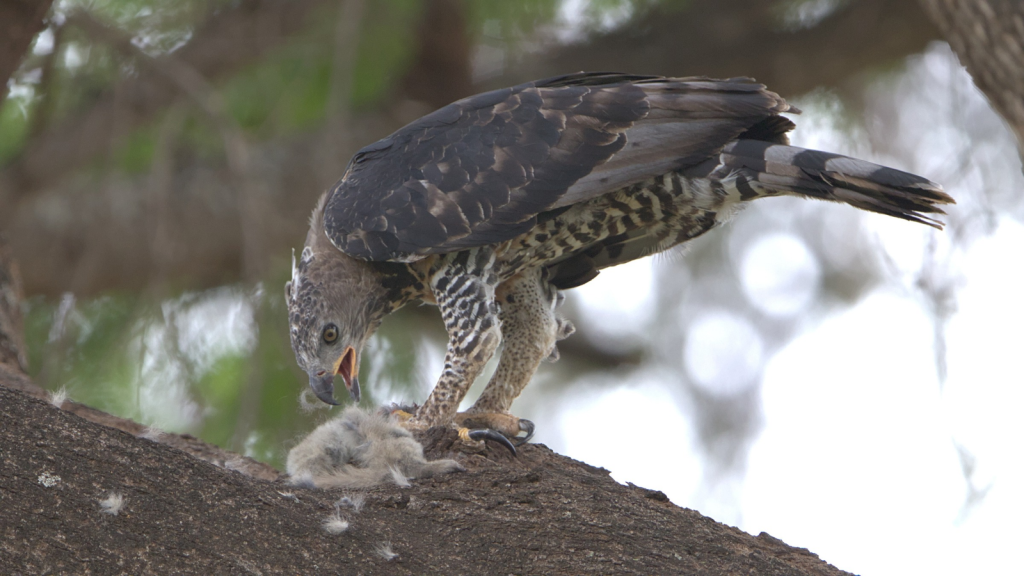
The Crowned Eagle, while not the largest eagle in Africa, is often considered the most powerful. With a wingspan of up to 1.9 meters, these birds are found in the forests of sub-Saharan Africa. They’re known for their incredible strength, capable of taking down prey several times their own weight, including small antelopes and monkeys. Crowned Eagles have incredibly strong leg muscles and long, curved talons that allow them to carry prey weighing up to 30 kilograms back to their nests.

